Marketing effectiveness in the new age of eCommerce
The ability to measure success is key to optimising any business strategy and marketing campaigns are no exception for the marketing effectiveness.
Marketing effectiveness = the measure of your marketing plan to optimise efficient sales growth and ROI. This is essential to achieving positive short and long-term results.
Marketing teams typically adopt as many marketing strategies as they can simultaneously hoping to drive leads from one of those to see what works. The reality is that they aren’t then able to say with certainty which strategy is successful and which one is not, since the interactions between these approaches are complex and hard to measure.
This challenge has become greater with the increased rate of business change through digital transformation and disruption, increased competition, and rapid eCommerce growth. This makes it all the more important to understand how customers’ needs are changing and for companies to adapt quickly if they do not want to miss important opportunities.
On top of all this, Covid-19 has now sped up the progression towards increased eCommerce impacting consumer behavior and shifting the balance from offline to online retail. With sudden store closures, many customers were forced to shop online to avoid queuing outside the few shops allowed to open during the lock-down. Globally, brands large and small have shifted efforts into boosting eCommerce with more sales online than in-store for many categories for the first time. Crucially, many believe that new purchasing habits formed during the pandemic will become permanent with a strong long-term shift towards regular online shopping in a wider range of categories.
What is your measurement strategy?
Considering the digital transformation in the past 20-30 years combined with the post-pandemic challenges, it has never been more important for businesses to adopt a data-driven approach and embrace the challenges of marketing measurement.
Successful companies and forward-thinking leaders have focused their attention on data analytics, understanding the value of knowing more about their customer’s preferences and what they do during the conversion journey in order to increase marketing ROI, using this insight to make informed strategic decisions.
Can we measure marketing effectiveness for customers who are influenced and buy both online and offline?
With the right capabilities, knowledge, and data-driven approach, the answer to this question is an emphatic yes. In the following, we are going to briefly review some of the approaches companies can adopt in their measurement process, and try to explore the pros and cons of each, without getting overly scientific.
Let’s start with Attribution modelling, a bottom-up digital marketing measurement approach that evaluates the impact of each individual customer touch-point in driving conversations. In other words, a potential customer, before deciding to buy a product, is going to ‘touch’ diverse marketing campaigns on different channels, like a paid search click, a promoted post on social media, an email with a discount, and so on. A multi-touch attribution model assigns credit to different touch-points, in order to understand which strategy is working well and generating sales. This is an amazing source of insight because companies can understand which campaign touchpoints are most highly used and help evaluate which channels work better than others and where in the process they apply. Companies use attribution to adjust future marketing strategies through redistributing their budget to reflect the whole digital marketing funnel. If the attribution model is an accurate reflection of how value is created, then sustained growth and improved marketing return on investment will result.
A key challenge with attribution is that not all attribution models are valid. Simple ‘positional’ models help firms understand the bias in ‘last-click’ sales reporting, but do not give definitive answers. Data-driven models promise more certainty, but even these give results that can vary widely between platforms and vendors. Online retailers should be cautious about black box ‘data-driven’ models which they do not fully understand and do not include indications of objective accuracy.
Nonetheless, multi-touch attribution models (also called MTA) are especially good for evaluating the impact of digital online cross channel campaigns since they provide a more granular and personal level view than traditional aggregate methods like the next approach we will look at: marketing mix modelling.
Market mix modelling (MMM) and econometrics are long-established techniques that use aggregated historical performance data and are useful for high-level analysis of marketing channels and sales drivers. These models estimate the total effect that every marketing channel has on sales while controlling factors like prices and seasonality that impact business performance. For example, if we think about sales happening during the pre-Christmas period, such a model would help you consider the normal seasonal increase in sales as a factor working alongside the marketing plan.
Market mix modelling provides broader recommendations for how marketers should allocate their budgets to optimize performance and it is especially useful to measure offline channels like TV, Radio, and Out of home. On the other hand, this approach is less precise than attribution and is typically subject to a wider margin of statistical error compared to data-driven attribution, especially when evaluating channels and campaigns at a granular level.
The key point to understand is that these are ‘top down’ statistical econometric models which estimate relationships between time periods and across geographical areas, rather than the ‘bottom up’ touchpoint-based analysis which can be done with digital marketing data. This is both a strength and a weakness: it is a strength because it can include any sales drivers offline or online, but a weakness because it can easily misestimate if not done correctly, and is only able to reliably pick up larger and more long term relationships.
Finally, marketers need to be aware of the most robust method which is run designed experiments and randomised control trials. These Hold out testing methods are mainly used to check and validate results from other methods since they are most robust for getting a precise measure. The only reason they are not used exclusively for all marketing measurement is that the methods are hard to scale beyond the occasional measurement of 1-2 channels at a time within a single campaign.
Such experiments are conducted using two matched groups of potential customers: a test group, the audience for whom a test is conducted including a specific marketing variant such as extra spending on a marketing channel; and a control group, an audience group that has the same characteristics of the test group audience but is not exposed to the test marketing activity. Random selection of which people are in which audience group can be used to make sure that the specific marketing variant is the only thing that can explain any change in subsequent purchase behavior, in the most robust type of experiment a Randomised Control Trial (RCT).
For example, an experiment that wants to test the role of a particular ad allocates specific people to a test group where they are shown the ad being evaluated and to a control group of very similar people where the ads are withheld. Evaluating the difference in the results between the two groups gives a very clear signal as to the net impact of the ad.
Hold out experiments are the most accurate method of measurement in marketing but they can typically only test one or two things at a time and can be difficult to manage. Experiments require careful design and do a good job of measuring what specific activity they are designed to measure, but no more. Companies must be prepared to compromise on their marketing plan to get the design to work at a sufficient scale. Despite these challenges, properly designed experiments are the most robust way to measure the effectiveness of specific marketing tactics and so major platforms like Facebook and Google provide tools to allow marketers to test specific marketing tactics in this way and these provide useful benchmarks for other more generalised cross channel measurement approaches.
Holistic attribution
A complete view of offline and online marketing
It is clear that marketing measurement is critical for determining campaign success, optimizing marketing spend, and driving business growth. Today marketers manage multiple campaigns across diverse media channels and through multiple devices and platforms, so accurate marketing attribution and effectiveness are more important than ever.
The complexity and range of methods represent a huge challenge for marketers and analysts. Companies relying on online and offline channels should consider a combination of both approaches to maximize the advantages of each methodology and to mitigate their limits at the same time. Attribution modelling will assign credit for all sales to digital marketing channels, whereas econometrics will take into account offline channels and non-marketing sales drivers, like price and seasonality. This means they can lead to very different results for the major digital channels, making it very hard for marketers to calculate the true ROI of each channel.
Here at Metageni, we have developed a holistic approach that allows us to combine econometrics and attribution in a single reconciled view of marketing and market drivers. This unified marketing measurement method adopts a data-driven approach that combines the aggregate data obtained from the marketing mix modelling and the person-level data offered by multi-touch attribution into a single comprehensive view.
The aim of this holistic approach is to collect relevant information from all the marketing campaigns taking into account the granular data (MTA) while still considering the broader marketing environment and external factors (MMM). In other words, we get the benefit of granularity and accuracy through digital attribution while also taking full account of the non-digital environment.
Crucial to getting this right is ensuring that attribution is accurate and we achieve this by building predictive attribution models using AI (machine learning) whereby we can say that a model that better predicts sales is more accurate than another. This, by the way, is the same standard that is used to evaluate econometric models. Analytical techniques like the use of ‘hold-out samples and diagnostic metrics help ensure the models are robust.
Using the strengths of both models and combining the different types of data helps to produce consistent ROI results for marketers, allocate marketing budgets with efficiency and drive sustained growth. Great skill and expertise is needed as every business has a unique combination of online and offline factors which drive growth online.
Get in touch with us for expert advice!
Thanks for reading – we hope you learned something through this high-level tour of marketing effectiveness methods. If you want to learn more about expert data analytics using AI, or are interested in how Metageni can help you use your data to grow online, then do get in touch with us: hello@metageni.com
Gabriel Hughes PhD
Does this article resonate with you? Check out other posts to the right of this page.
Can we help unlock the value of your analytics and marketing data?
Metageni is a London UK based marketing analytics and optimisation company offering support for developing in-house capabilities.
Please email us at hello@metageni.com















